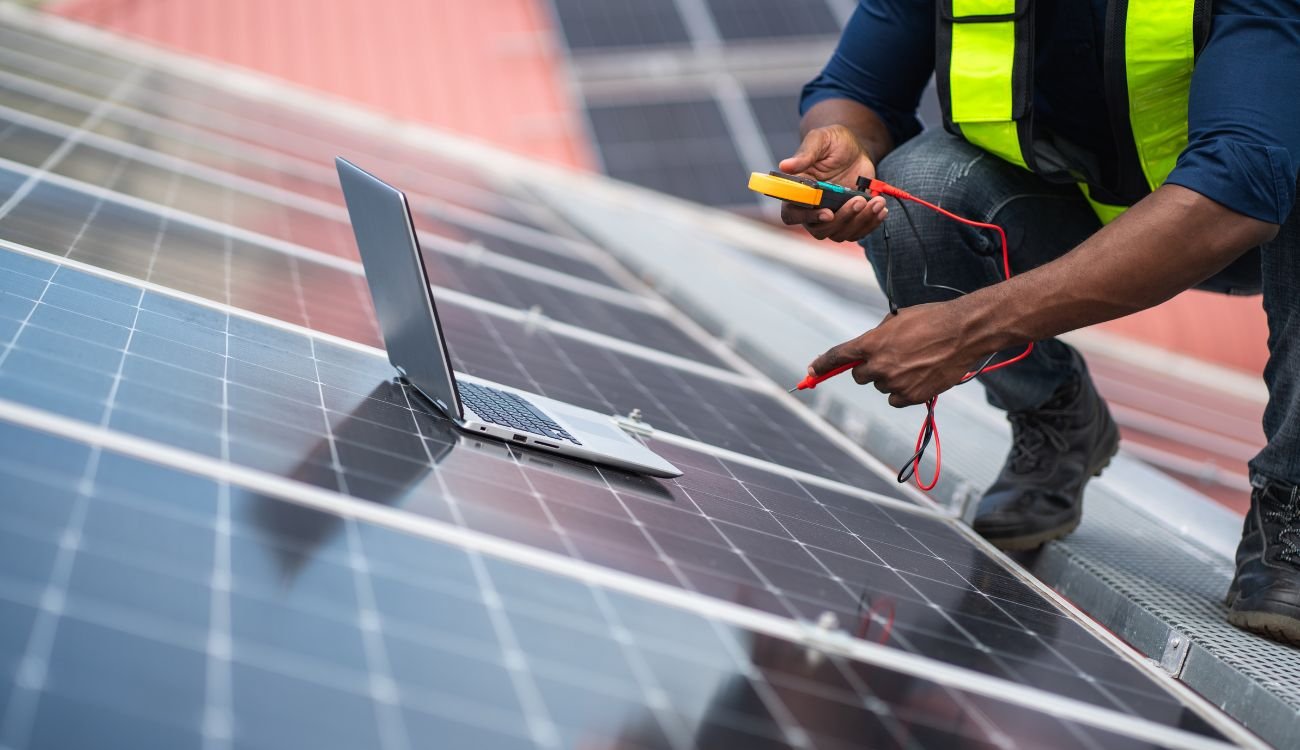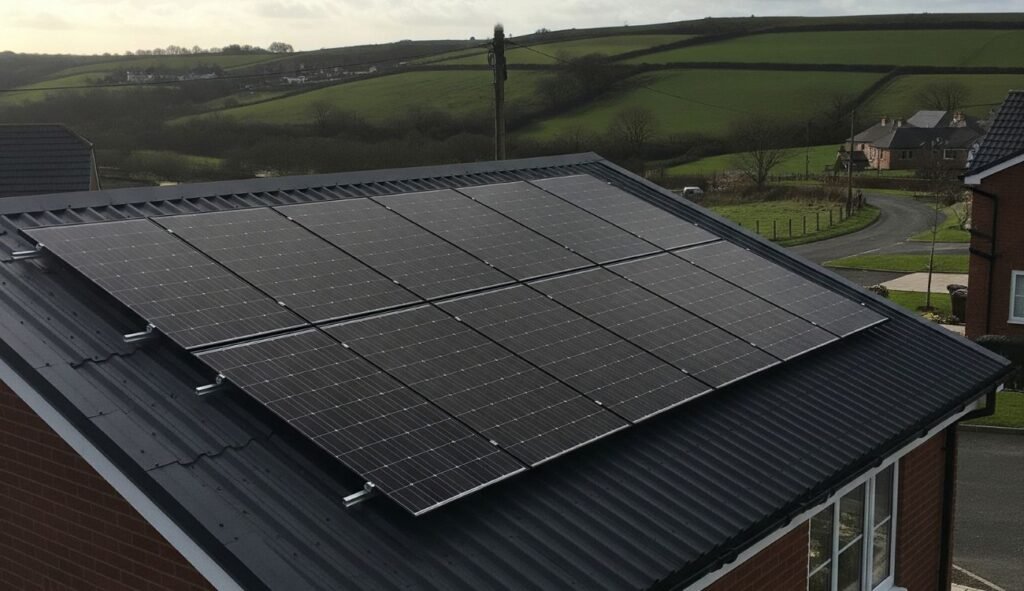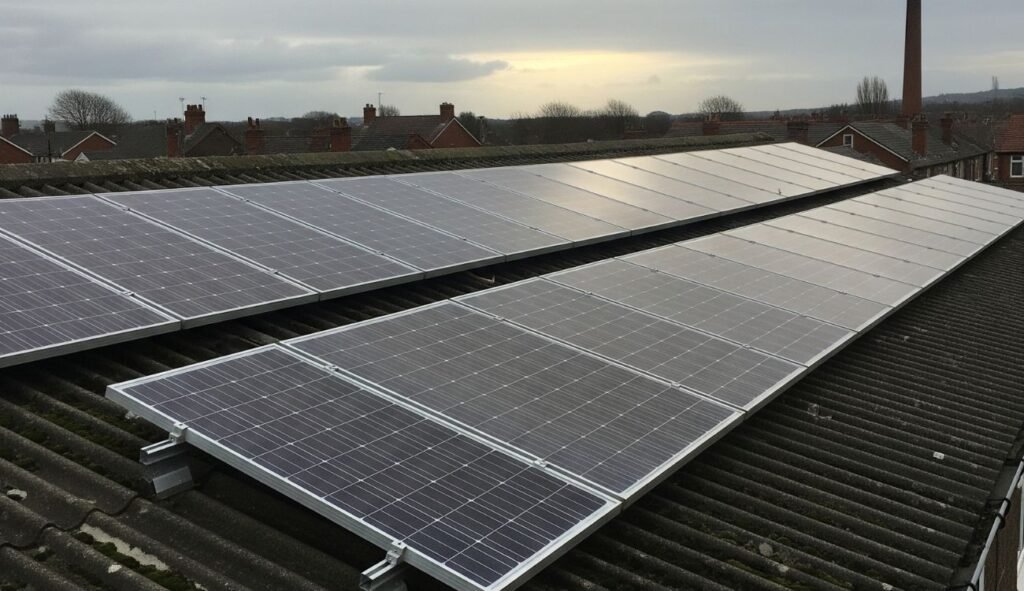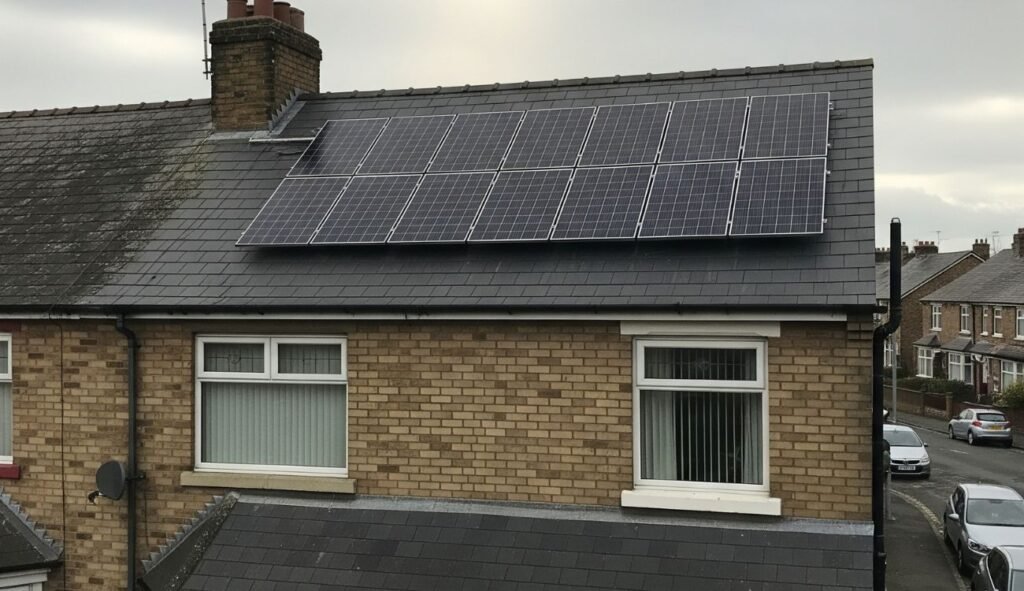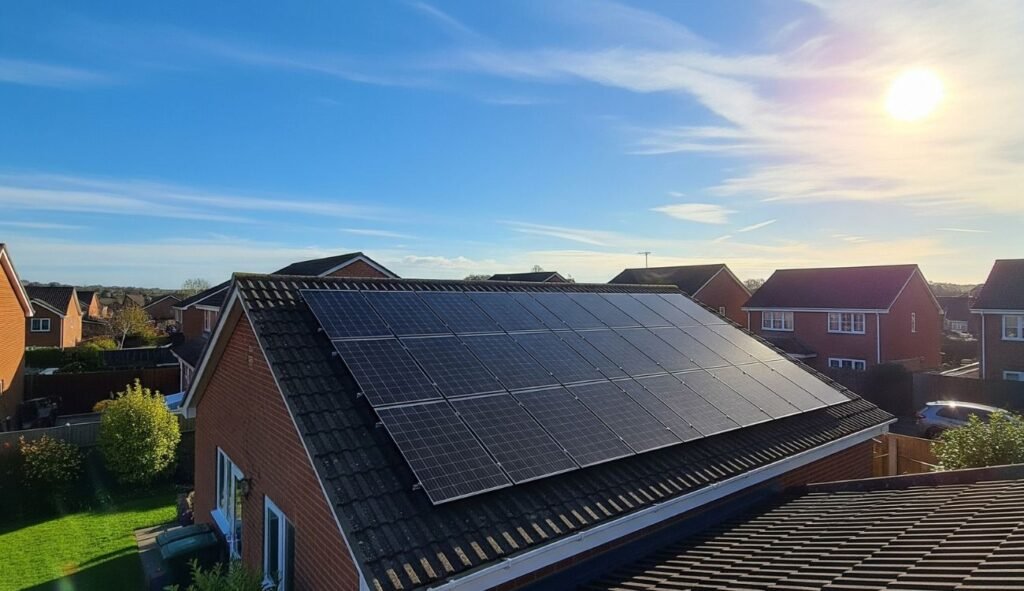Mixing different voltage solar panels may seem like a convenient solution, especially when upgrading or expanding an existing solar system, but is it safe, efficient, or even advisable?
For UK homeowners, landlords, and commercial property owners looking to reduce energy bills, comply with EPC regulations, or meet corporate sustainability targets, understanding solar panel compatibility is crucial.
This guide dives deep into how you can combine solar panels of varying voltages, the effects on system performance, and how to do it correctly without damaging your equipment. We’ll discuss technical, practical, and financial implications, ensuring you make the most informed decision for your solar energy investment.
Can You Mix Different Voltage Solar Panels in One System?
Yes, you can mix solar panels with different voltages, but with important caveats. It requires careful system design, compatible inverters or charge controllers, and an understanding of the impact on performance and safety.
If you’re considering system expansion and wondering how many solar panels you can fit on your roof, that will also influence your decision to mix voltages.
Is it ever recommended?
Mixing voltages is generally not recommended unless absolutely necessary. However, there are safe scenarios where it may be acceptable, such as:
- Upgrading older systems incrementally.
- Temporary setups or mobile systems.
- Using multiple MPPT (Maximum Power Point Tracking) charge controllers.
Thinking about upgrading your solar setup or expanding your current system?
Future Heat is a MCS-certified installer serving Tyne and Wear, Newcastle, and the North East. Let our experts design a solution that’s safe, efficient, and future-ready. Get your free solar panel quote today.
What Are the Risks of Mixing Solar Panel Voltages?
Mixing solar panels with different voltages can lead to a range of issues that compromise the efficiency, safety, and lifespan of your system. While it might seem like a practical shortcut, the risks often outweigh the benefits unless the system is professionally designed.
1. Reduced system efficiency
Mixing solar panels with different voltages can drag down your system’s performance. Think of it like a team of cyclists, if one cyclist is much slower, the whole team has to slow down to stay together.
When solar panels don’t match, the stronger panels are forced to operate at the level of the weakest one. This leads to wasted energy and means your system won’t produce as much power as it could.
Your solar setup is only as efficient as its lowest-performing panel.
2. Inverter compatibility issues
Inverters, the devices that convert DC electricity from your panels into usable AC electricity for UK households operate within a defined input voltage range. Mismatched panel voltages can:
- Trigger error or fault codes.
- Force the inverter to operate below optimal performance.
- Potentially void the manufacturer’s warranty, especially with brands like SolarEdge, SMA, or Fronius.
- Accelerate inverter wear and tear.
3. Battery charging problems
In off-grid or hybrid solar systems that use solar batteries, mixed panel voltages can result in unstable charging currents. This leads to:
-
Undercharging, which reduces battery performance.
-
Overcharging, which shortens battery life and may pose safety risks.
To avoid this, your system must have a properly matched solar charge controller and accurate battery bank sizing.
It’s crucial to understand what size solar battery you need to match the mixed panel setup effectively.
4. Voltage imbalances & equipment stress
Mismatched voltages create voltage imbalances within your system, placing stress on components like charge controllers, inverters, and smart meters.
Sensitive electronics, particularly in modern smart homes or commercial solar installations may become erratic or even damaged by inconsistent voltage flow.
5. Overheating & fire risk
When unregulated or incompatible voltages circulate within your system, it can cause overheating in wiring, connectors, or junction boxes.
This not only impacts system reliability but can also increase the risk of thermal damage or fire hazards, particularly in older or improperly fused setups.
How Can You Safely Mix Solar Panels of Different Voltages?
If you’re set on combining different voltage panels, it’s essential to follow specific engineering best practices. With the right configuration and technology, particularly MPPT controllers, it’s possible to build a mixed system that performs reliably.
1. Use an MPPT Charge Controller
MPPT controllers can optimise output from each panel by adjusting to voltage variations in real time. This is essential when:
- Panels are of varying voltages or brands.
- System expansion is required.
Tip: Always check the MPPT’s input voltage limits. For UK systems, this is often between 100V–150V for residential and up to 600V+ for commercial use.
2. Wire Panels in Parallel (With Caution)
Parallel wiring allows voltages to equalise while current adds up, making it more tolerant of mismatched voltages, but only to a point.
Use Blocking Diodes
These prevent reverse current from flowing into lower voltage panels, protecting the system.
3. Use Separate Strings
Run panels with similar voltages on independent strings, each with its own MPPT input. This is ideal for:
- Large commercial solar arrays.
- Complex residential setups.
While these methods can make a mixed-voltage system viable, they often require a deep understanding of electrical systems and regulations. If you’re considering doing it yourself, make sure to read our guide on can I install solar panels myself before making any decisions.
What Do UK Regulations Say About Mixed Solar Panels?
UK solar installations are governed by strict standards to ensure safety, efficiency, and eligibility for financial incentives. Mixing panel voltages isn’t banned, but systems must still comply with MCS standards and Ofgem requirements to qualify for schemes like the Smart Export Guarantee (SEG).
1. MCS Certification
To qualify for the Smart Export Guarantee (SEG), your system must be installed by an MCS-certified installer. Mixed-panel setups are not disqualified outright but must meet wiring and safety standards. If you’re unsure how to find a qualified installer, our guide on how to choose a solar panel installer can help you make an informed, confident decision.
2. Ofgem Guidelines
Ofgem mandates that any export to the National Grid be safe and compliant. An unstable or poorly matched system could fail grid compliance tests, making you ineligible for SEG payments.
Who Should Consider Mixing Different Voltage Panels?
Although not ideal for every situation, certain property owners may benefit from mixing solar panel voltages. If expansion, budget constraints, or unique layout challenges are involved, it can be a viable option, provided it’s executed with the right expertise and components.
Homeowners
If you’re expanding an existing solar PV system and have access to discounted panels, mixing might make sense, but only if performance trade-offs are acceptable.
Key Priorities:
- Maximise return on investment.
- Avoid compromising Smart Export Guarantee eligibility.
- Use MCS-accredited professionals.
Landlords
To meet minimum EPC ratings (especially as rules tighten), landlords might look at retrofitting solar solutions. A mixed system can be a cost-effective workaround, but it needs professional design.
Key Priorities:
- Boost EPC to legally let properties.
- Minimise installation costs.
- Ensure long-term reliability for tenants.
Commercial Property Owners
Business owners might consider mixing voltages when:
- Expanding existing rooftop systems.
- Integrating solar into BMS (Building Management Systems).
- Managing complex power needs across different units.
It is important to know beforehand if your business is suitable for solar energy, as it can be quite an initial investment, especially if you are mixing voltages.
Key Priorities:
- Optimise across zones.
- Ensure voltage balancing.
- Protect high-value electrical equipment.
Best Practices for Mixing Solar Panels in the UK
- Match current output wherever possible, even if the voltage differs.
- Use separate MPPT inputs on hybrid or string inverters.
- Monitor system performance with tools like SolarEdge or Victron.
- Consult a certified installer to ensure compliance with UK electrical and MCS standards.
- Avoid DIY unless you have electrical training and solar experience.
Frequently Asked Questions (FAQs)
Yes, but only with a properly designed setup using separate charge controllers or inverters. Without this, the mismatch could damage equipment or reduce efficiency.
The total voltage will add up, but the current is limited to the weakest panel. This can cause underperformance and may overload your inverter if not properly calculated.
Parallel wiring is more tolerant of voltage differences, but requires current balancing and may need blocking diodes. Series wiring is more efficient when all panels match.
Yes, it can. Many inverter manufacturers specify voltage input ranges. Using mismatched panels may exceed those limits and void your warranty, always check the spec sheet.
Yes, but only if your system is professionally designed and installed by an MCS-certified installer. The Smart Export Guarantee (SEG) requires systems to meet strict safety and performance standards. A poorly configured mixed-voltage system might fail compliance checks, making you ineligible for payments. Always confirm with your installer that your design meets Ofgem and MCS guidelines.
Our Verdict
Mixing solar panels with different voltages can be done, but it’s a decision that demands caution, technical understanding, and often professional guidance.
For many homeowners, landlords, and businesses in the UK, installing a uniform panel system remains the most reliable route to maximise performance, protect warranties, and stay compliant with MCS and Ofgem standards.
However, in scenarios where expansion or budget limitations are key factors, a well-designed mixed system using MPPT controllers and careful wiring can work effectively.
The most important step is to consult a qualified solar installer who can assess your unique setup and recommend a safe, efficient solution.
Myles Robinson is a seasoned expert in the boiler and home improvement industry, with over a decade of experience. He is deeply committed to environmental sustainability, actively promoting energy-efficient heating solutions to help households reduce their carbon footprint. By combining industry expertise with a dedication to environmental responsibility, Myles continues to lead efforts in transforming home heating practices towards a more sustainable future.

